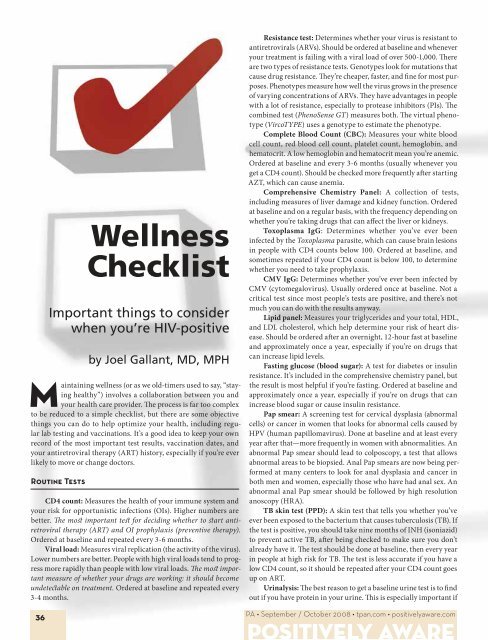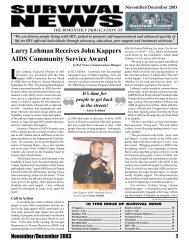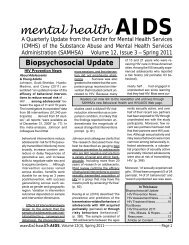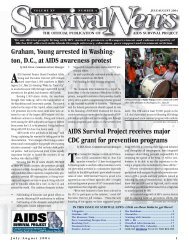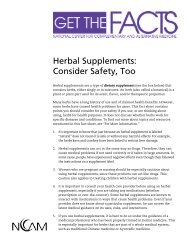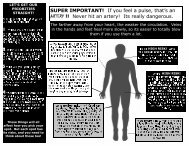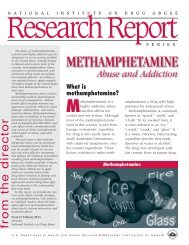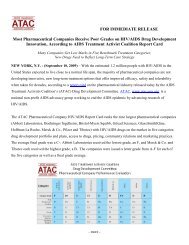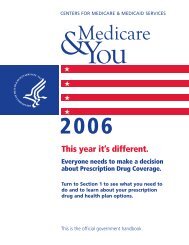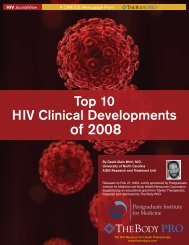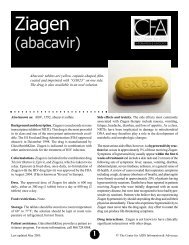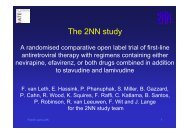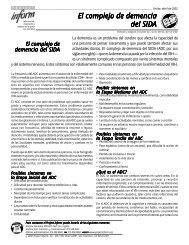WELLNESS STARTS WITH AWARENESS - CD8 T cells - The Body
WELLNESS STARTS WITH AWARENESS - CD8 T cells - The Body
WELLNESS STARTS WITH AWARENESS - CD8 T cells - The Body
You also want an ePaper? Increase the reach of your titles
YUMPU automatically turns print PDFs into web optimized ePapers that Google loves.
Maintaining wellness (or as we old-timers used to say, “staying<br />
healthy”) involves a collaboration between you and<br />
your health care provider. Th e process is far too complex<br />
to be reduced to a simple checklist, but there are some objective<br />
things you can do to help optimize your health, including regular<br />
lab testing and vaccinations. It’s a good idea to keep your own<br />
record of the most important test results, vaccination dates, and<br />
your antiretroviral therapy (ART) history, especially if you’re ever<br />
likely to move or change doctors.<br />
Routine Tests<br />
CD4 count: Measures the health of your immune system and<br />
your risk for opportunistic infections (OIs). Higher numbers are<br />
better. Th e most important test for deciding whether to st art antiretroviral<br />
therapy (ART) and OI prophylaxis (preventive therapy).<br />
Ordered at baseline and repeated every 3-6 months.<br />
Viral load: Measures viral replication (the activity of the virus).<br />
Lower numbers are better. People with high viral loads tend to progress<br />
more rapidly than people with low viral loads. Th e most important<br />
measure of whether your drugs are working: it should become<br />
undetect able on treatment. Ordered at baseline and repeated every<br />
3-4 months.<br />
36<br />
Wellness<br />
Checklist<br />
Important things to consider<br />
when you’re HIV-positive<br />
by Joel Gallant, MD, MPH<br />
Resistance test: Determines whether your virus is resistant to<br />
antiretrovirals (ARVs). Should be ordered at baseline and whenever<br />
your treatment is failing with a viral load of over 500-1,000. Th ere<br />
are two types of resistance tests. Genotypes look for mutations that<br />
cause drug resistance. Th ey’re cheaper, faster, and fi ne for most purposes.<br />
Phenotypes measure how well the virus grows in the presence<br />
of varying concentrations of ARVs. Th ey have advantages in people<br />
with a lot of resistance, especially to protease inhibitors (PIs). Th e<br />
combined test (PhenoSense GT) measures both. Th e virtual phenotype<br />
(VircoTYPE) uses a genotype to estimate the phenotype.<br />
Complete Blood Count (CBC): Measures your white blood<br />
cell count, red blood cell count, platelet count, hemoglobin, and<br />
hematocrit. A low hemoglobin and hematocrit mean you’re anemic.<br />
Ordered at baseline and every 3-6 months (usually whenever you<br />
get a CD4 count). Should be checked more frequently aft er starting<br />
AZT, which can cause anemia.<br />
Comprehensive Chemistry Panel: A collection of tests,<br />
including measures of liver damage and kidney function. Ordered<br />
at baseline and on a regular basis, with the frequency depending on<br />
whether you’re taking drugs that can aff ect the liver or kidneys.<br />
Toxoplasma IgG: Determines whether you’ve ever been<br />
infected by the Toxoplasma parasite, which can cause brain lesions<br />
in people with CD4 counts below 100. Ordered at baseline, and<br />
sometimes repeated if your CD4 count is below 100, to determine<br />
whether you need to take prophylaxis.<br />
CMV IgG: Determines whether you’ve ever been infected by<br />
CMV (cytomegalovirus). Usually ordered once at baseline. Not a<br />
critical test since most people’s tests are positive, and there’s not<br />
much you can do with the results anyway.<br />
Lipid panel: Measures your triglycerides and your total, HDL,<br />
and LDL cholesterol, which help determine your risk of heart disease.<br />
Should be ordered aft er an overnight, 12-hour fast at baseline<br />
and approximately once a year, especially if you’re on drugs that<br />
can increase lipid levels.<br />
Fasting glucose (blood sugar): A test for diabetes or insulin<br />
resistance. It’s included in the comprehensive chemistry panel, but<br />
the result is most helpful if you’re fasting. Ordered at baseline and<br />
approximately once a year, especially if you’re on drugs that can<br />
increase blood sugar or cause insulin resistance.<br />
Pap smear: A screening test for cervical dysplasia (abnormal<br />
<strong>cells</strong>) or cancer in women that looks for abnormal <strong>cells</strong> caused by<br />
HPV (human papillomavirus). Done at baseline and at least every<br />
year aft er that—more frequently in women with abnormalities. An<br />
abnormal Pap smear should lead to colposcopy, a test that allows<br />
abnormal areas to be biopsied. Anal Pap smears are now being performed<br />
at many centers to look for anal dysplasia and cancer in<br />
both men and women, especially those who have had anal sex. An<br />
abnormal anal Pap smear should be followed by high resolution<br />
anoscopy (HRA).<br />
TB skin test (PPD): A skin test that tells you whether you’ve<br />
ever been exposed to the bacterium that causes tuberculosis (TB). If<br />
the test is positive, you should take nine months of INH (isoniazid)<br />
to prevent active TB, aft er being checked to make sure you don’t<br />
already have it. Th e test should be done at baseline, then every year<br />
in people at high risk for TB. Th e test is less accurate if you have a<br />
low CD4 count, so it should be repeated aft er your CD4 count goes<br />
up on ART.<br />
Urinalysis: Th e best reason to get a baseline urine test is to fi nd<br />
out if you have protein in your urine. Th is is especially important if<br />
PA • September / October 2008 • tpan.com • positivelyaware.com<br />
Positively Aware


